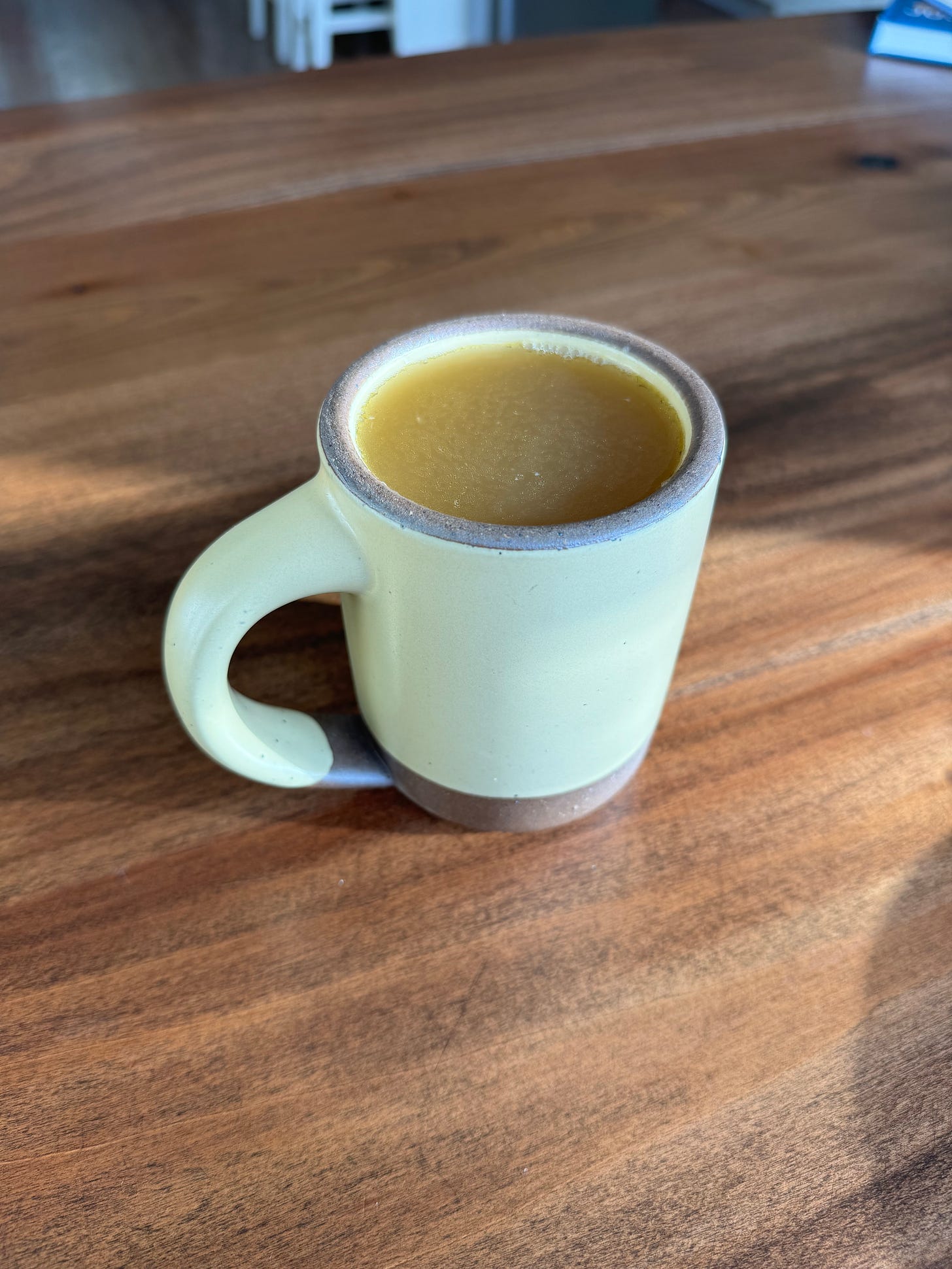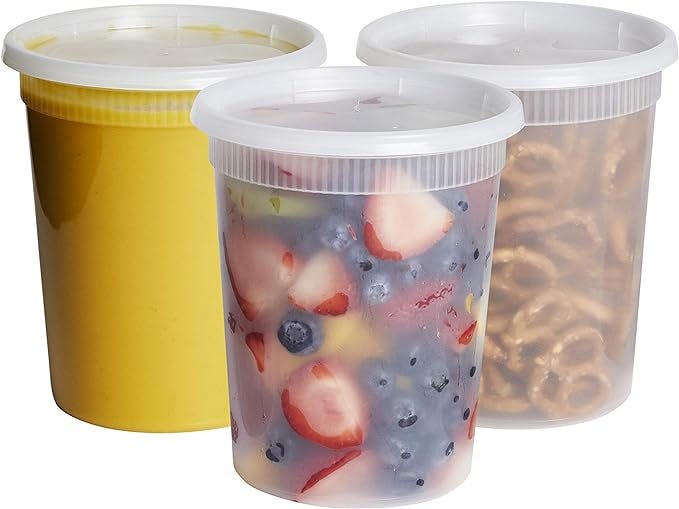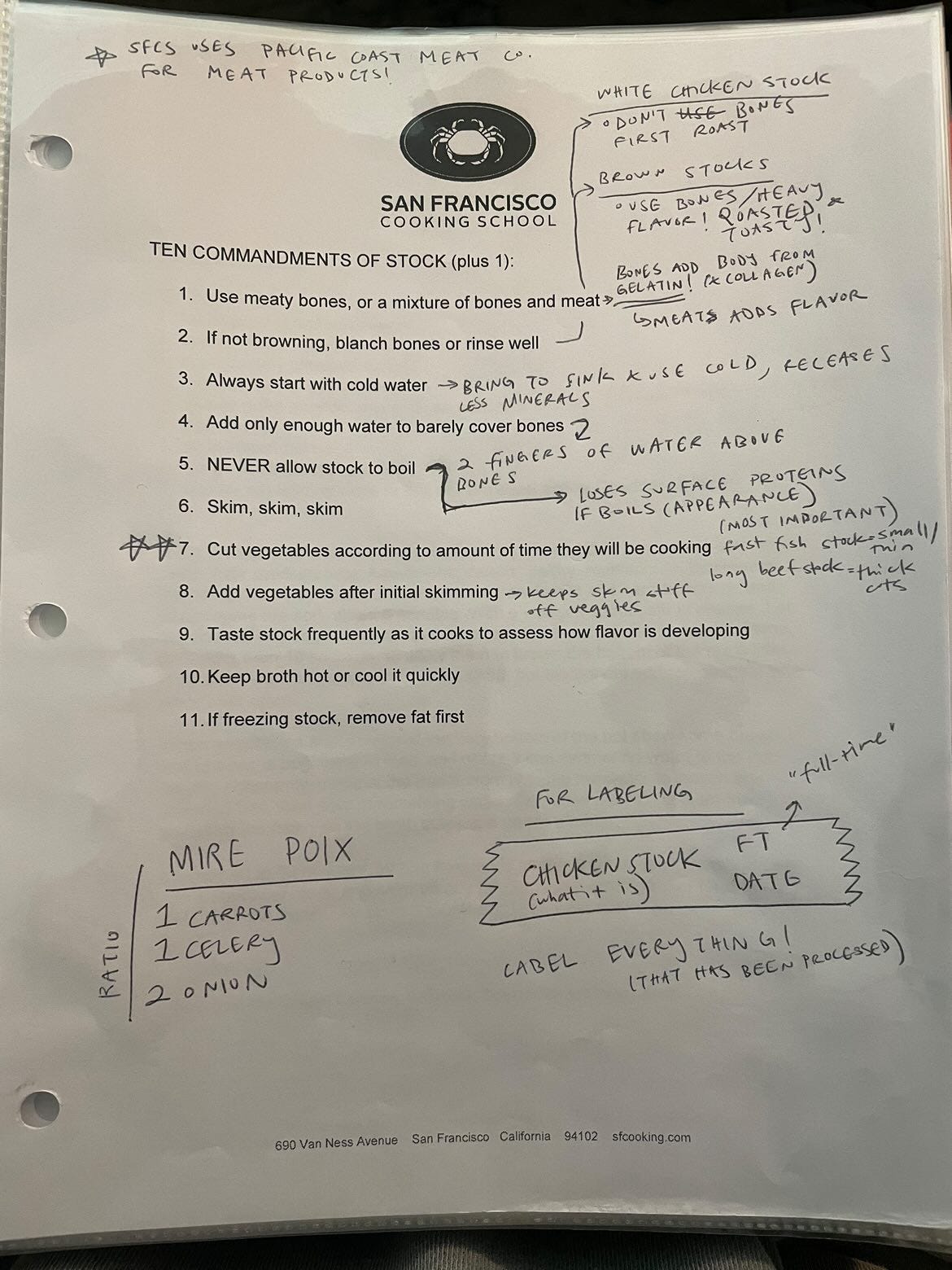Today’s letter includes a deep dive into all things homemade chicken stock. My favorite professional and home cooks shared their stock secrets with me. I’m not going to paywall their tips because I don’t want to gatekeep stock wisdom. I’ll hope you’ll make some stock!
The best moment of my week was when my friend, Katie, complimented my sweater and asked me if it was from Sezane. To which I eagerly responded by standing up in the restaurant, curling my hands around my mouth, and shouting at the top of my lungs, “NO BITCH, IT’S OLD NAVY!!!!!!!”
The lavender color is so pretty and the sweater is actually quite soft. And it’s on sale for $31!
However, we are not here to talk about SWEATERS. We are here to talk about STOCK.
As you may have noticed in my Instagram stories over the last couple weeks/months, I have been really into making chicken stock. In fact, I can confidently say it is the cheapest, easiest, and most satisfying thing that you can do to make you feel far superior to all those around you.
Having quarts of homemade stock in your freezer is actually the golden ticket to life. It means that at any moment, you’re steps away from taking a soup, pasta, sauce, grain, or stew to the next level, or you can pour some straight into your favorite mug and sip it straight up. I genuinely feel so GOOD when I drink this stuff.
I went to dinner this week at a tReNdY wInE bAr in LA (wearing my Sezane dupe) and decided to order the cup of broth that they have on the menu for $7. It was a really good cup of broth, no doubt, but to pay 7 US dollars for not even eight ounces of fortified chicken bone water is insane when you can make quarts and quarts of it at home for a fraction of the price. I! Am! Just! Saying!
If making homemade stock feels confusing or intimidating, I will be the first to admit that I was terrified of the “stock room” in culinary school. I had no understanding of making stock and was admittedly quite mystified by the process.
I’m telling you right now, YOU CAN DO THIS.
For starters, chicken stock is a liquid made by simmering chicken bones, vegetables, herbs, and spices together in water, per the search engine, Google. I don’t think you need a recipe for it because it should be an opportunity to use up what you have. Loosely speaking, you should aim for about 4-8 pounds of chicken parts for every 10-12 cups of water. But it doesn’t need to be an exact science.
Everyone’s stock looks and tastes different, depending on their ingredients and technique. There isn’t a right or a wrong stock, IMO. And the best way to get good at making homemade stock is to TRY IT. You can always fine tune it as you get more comfortable making it.
You don’t need any special equipment (as long as you have a large pot or Dutch oven), but if you do want to up your stock game, here are a few items that may help you out.
Fine Chinois Strainer
I just got a FINE CHINOIS because I figured it was time for me to get SERIOUS about stock making. I was previously using my colander, which is not ideal, but it did the trick. I spent the first 6 weeks of culinary school listening to my chef instructor talk about a “fine chinois” and I literally had no idea what she was saying. IT’S JUST A FANCY STRAINER.
Quart Deli Containers
I freeze my stock in quart-sized deli containers so that I can thaw them container by container as I need them. My freezer space is obviously a nightmare but I’m always able to make room for these. Don’t forget to label ‘em!
I asked my favorite professional and home cooks to share their HOT STOCK SECRETS. Turns out, everyone has a lot of thoughts on stock. Here’s what the people had to say!
Molly Adams, recipe developer, writer, and person who has probably taught me most about cooking TBH!
“I usually use chicken legs since they are super cheap and also give the stock a nice richness. Onion skins add a great deep brown color and add a lot to the flavor, plus you don’t have to bother peeling them. I always add a Parmesan rind or two (just scrape off the wax) to add some umami notes. Never freeze in glass (I’ve learned this the hard way), I always freeze in plastic quart containers.
If I’m making a huge batch I like to cook it in the oven in my largest oven safe pots so that I don’t have to worry about tending to the open flame for hours. I usually do it on 300F and just transfer it to the oven once it’s at a simmer on the stove top. If I’m making a small batch, I love using the instant pot. I prefer the flavor on the instant pot, but you are some what limited by the volume.”
, Cookbook author, recipe developer, and writer“The joy of stock is that you can throw in any odd bits you have laying around — ingredients like parsley stems, a knob of ginger, wedge of fennel, and even a squeeze of lemon are all great ways to add flavor without much effort. My personal favorite add-in is the rind of a hunk of Parmesan, which adds a certain umami throughout.”
, Private chef-nutritionist“I buy the frozen chicken feet from whole foods (they’re so cheap) because chicken feet equals collagen and collagen equals a rich, silky stock. I use 1 pound for a batch and freeze the second half for another batch. If you can’t handle chicken feet, wings are great too.”
Jesse Henderson, Private Chef and star of Chefs and the City
When asked his most pertinent stock tip, Chef Jesse was adamant to always… “BUY LOW SELL HIGH!”
, Cookbook author (pre-order Tahini Baby!) and host of Top Chef Canada“Homemade stock can feel daunting at first but when you realize what can go into a stock, how easy it is to make, and the flavor it brings to your food - you can see what a genius tool and technique it becomes while cooking at home. I ALWAYS save my veg scraps when I cook to throw into future stock.
Making a stock can be a bi-weekly or monthly routine where you grab your leftover scraps or meat trimmings (save and freeze those carcasses) and simmer them in a big pot. This is the perfect way to get the most out of everything you buy and cook with. I love making a large batch to freeze and have on hand. It builds so much flavor in your dishes!”
, chef at Scratch Made“Low and slow is the name of the game! There’s no reason for your stock to be at a tipping boil. A *low* simmer is better because the flavors and collagen can slowly extract. By bringing it to a boil, your liquid is reducing faster than all that good stuff can infuse. Boiling also yields a cloudy stock. Not the end of the world but we can do better.
Use a large, tall vessel. Narrow and deep is better than wide and shallow because there will be less evaporation. You want to be able to simmer for a long time without the volume reducing a lot.
More time does not necessarily lead to more flavor. At a certain point you’ve extracted what you can extract. There’s no reason,in my opinion, to simmer a stock for 12 or 24 hours. Chicken stock needs about 3-4 hours, beef about 8, and veg only about an hour. If you’re looking for something more flavorful, strain and reduce the stock. That’s called a jus.
Also use a spoon or ladle to skim the foam off the top of your stock as it simmers! It’s not the end of the world, but it can negatively impact the clarity and flavor.”
Hailee Catalano, chef and content creator
My biggest hot tip/hot take is I don’t put carrots in my stocks. I find it overpowering and tends to muddle the overall flavor!
, aka Lupa Cotta aka Pizza Tourist aka German shepherd dog mom“After removing the bones or vegetables from your stock transfer the liquid to a large container and refrigerate it overnight. This will allow the fat to rise and solidify on top. The next day, you can easily lift off the hardened fat, leaving the stock beneath. You can then save or freeze the broth for future use.”
Maddy DeVita (aka @handmethefork), private chef and content creator
“The very first thing that came to mind is roast your bones!!!!! Whether it’s a fish, chicken, pork, beef, etc stock (just not veggie), caramelizing the bones creates a richer, tastier, deeper flavor 🤤🤤🤤🤤”
, chef, content creator, and wedding cake baker(She sent me this picture of her notes from culinary school!!!)
“The #1 thing I think is the most important (to me) is starting with cold water always. Sometimes I get lazy and don’t follow everything, but I will always start with cold water to ensure a fuller flavor.”
Laurent Rebuffel, my friend from the gym (he’s French)
“I buy it at Monsieur Marcel at the Grove.”
, cookbook author and content creator“For all stocks, time is your best friend, but for vegetable-based stocks it is so, SO important. If I’m making a vegetable stock, I like to simmer it until it’s a deep shade of brown, which lets me know I’ve infused as much flavor into it as I can possibly get. Also, don’t sleep on your garlic and onion scraps. Even the peels add so much depth to a veg stock.”
Olivia Hagerty, Lead Line Cook at Damian
“Veggie stock is one of the least popular stock varieties out there, and for good reason. Often it is flavorless and lacks depth or richness. Here are my favorite tips for making a deeply umami vegetable stock!
-Save veggie scraps over time. I keep a bag in my freezer to fill up with vegetable scraps while I cook during the week. Think carrot peels, onion and celery butts, garlic peels, parsley stems and even mushroom bits. All of that good stuff. Just avoid any cruciferous vegetables…they are too “farty.”
-MISO. Evenly coat your veggie scraps in a generous scoop of miso paste before spreading them out and roasting on a sheet tray (at about 350°) until they’re all golden brown and toasty.
-COLD WATER. Cover your veggies with COLD water in a pot. Bring it up to temperature and allow to simmer gently, making sure that it is not boiling. Veggie stock will impart flavor much quicker than chicken, beef, or another protein-based stock. The key is to allow the water to come up from cold, this will prevent your vegetables from overcooking, turning to mush and making the stock cloudy. It may only need an hour!
-Strain and save! That’s it! I like to freeze quarts of stock for later.”
Lily Stearns, Private Chef
“A big thing I find helpful sounds a bit crazy to anyone who likes well-seasoned food but TRUST. Don’t salt the stock until you add it to whatever you’re using it for! You’ll likely be reducing it further when you use it in a recipe so if it’s already heavily seasoned, you’ll end up with a super salty sauce, soup or whatever you’re making. The other ingredients will add the flavor you need and then you can salt it up later.
When you make a big batch of any kind of stock always freeze a quart container or two (once it’s cooled and labeled properly of course!) there’s nothing better than remembering you have stock in the freezer that can be used for whatever your little heart desires!
Leeks are so underrated and are such a good addition to any stock. Try adding some next time, I’m telling you!!! Since stocks are really just a receptacle for any “scraps” it’s the perfect opportunity to get creative and add some of your favorite veg / leftover scraps. Don’t waste food! Make stock instead!!!!”
Olivia Anderson, Chef and my former CULINARY SCHOOL CLASSMATE!
“Roasting or browning meat scraps and veggies before adding water. I am LAZY so I like to brown whatever bones and veg I’m using in my stock pot so I can avoid heating my oven and dirtying a sheet pan, but any form of maillard reaction will do. Meat/bones first, then veggies next. The difference in depth of flavor is absolutely wild.
Add salt at the END of the cooking process. I like to reduce my liquid at a bare simmer by half, (a solid 5+ hours) so if it’s properly salted at the beginning of the process, it’ll be a salt bomb after it’s reduced. I also very often opt for a couple teaspoons of soy sauce at the end in place of salt because it ups the umami flavor so much, without making the stock taste like soy sauce at all.
Flat ziploc storage: Once the stock has cooled to warm, not hot, I freeze it in labeled quart bags. I place the bags in a quart container or large cup (like a piping bag for icing) to make filling easier. Then seal, and lay them flat on a sheet tray, no more than 3 layers tall. Once they’re frozen solid, usually 24 hours, I remove the sheet tray and leave them stacked in the freezer. Quart containers are easier to fill, but the plastic will get brittle and break in the freezer, and they take up a lot more space.”
Chloe Mozer, Private Chef at Oooey Studios
“One of the selling points of stock is how easy it can be: throw any veg scraps / meat bones / herbs you have lying around into a pot and voila! A tip I have for elevating your stock game for culinary purposes, is to be a bit more intentional about the flavors. Try dividing your ingredients: make one pure chicken stock, maybe a leek/allium broth, a root vegetable broth, a mushroom broth.
Utilize these stocks to really elevate your flavors in your meals: you could make a mushroom risotto with mushroom broth, poach your chicken breast in chicken broth to give it extra richness, boil potatoes in leek broth. This takes stock to the next level by thinking of it as a way to infuse flavor intentionally into your meals.”
, aka Easy Gay Oven, baker and content creator
“This is such a cheffy thing that people get sensitive about and I KNOW certain internet foodies would be UP MY ASS if I said something they disapproved about making it so I will stay in my lane.
Here’s my tip about not making it though, especially when the stock is not the star of the show. Don’t buy the stock from the store in the big jugs or cans, they’re usually made with concentrate, which is just the stuff that’s in those better than bouillon jars. So you’re paying more money for a bunch of water and also wasting a ton of packaging. It’s like 7 times cheaper per cup and it lasts for like 2 years post-opening in the fridge (whereas opened broth goes bad in like a week or two) according to ATK.”
Darcy Lenz, former editor (my first & fav manager) turned freelance food writer and law student
“If you want to be a homemade stock girlie, start two freezer-safe containers to collect your scraps through the week: one for produce bits and one for meat/poultry bones (picked clean). At the end of the week or every two weeks, take what you got and make stock.
If you don’t roast whole chickens regularly (leaving you with carcasses) or don’t naturally end up with ample meat bones in your life, you can buy perfect stock bones at the meat counter of most grocery stores. Or you can make a delish veg stock instead—use mushrooms! Dry ones too for an extra-rich version!
It may seem annoying but do skim the foamy stuff off the surface.
People always say you should roast your bones first… you probably should but I never do because I’m lazy.”
, Chef, recipe developer, writer, food stylist, content & art direction“My hot tip for the best chicken stock ever is boil from raw. I’ve tried all the which ways possible and i think it yields the best tasting broth IMO. Obvs after about 40-ish mins, remove the chicken and pick the chicken from the carcass—then carry on boiling the bones for at least 6hrs for stock, 10 hrs for bone broth.”
Lizzie Stapleton, high school English teacher, my friend and fellow stock enthusiast
“Every time I cook with vegetables, I put the scraps in a silicone zip top bag. I buy at least 1 rotisserie chicken a week, so when my freezer is too full of scraps and chicken bones, that’s when I make stock. I wait to throw the vegetables in until the last hour of simmering along with some black peppercorns, apple cider vinegar, and bay leaves.
Once I strain it, I make sure it cools down first because I have cracked many jars from putting it straight in the fridge. I use the stock every time I make rice or any grain, or sometimes I drink it out of a mug for breakfast when I’m feeling like I want to pretend I’m skinny.”









it's an honor just to be nominated